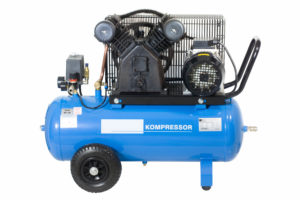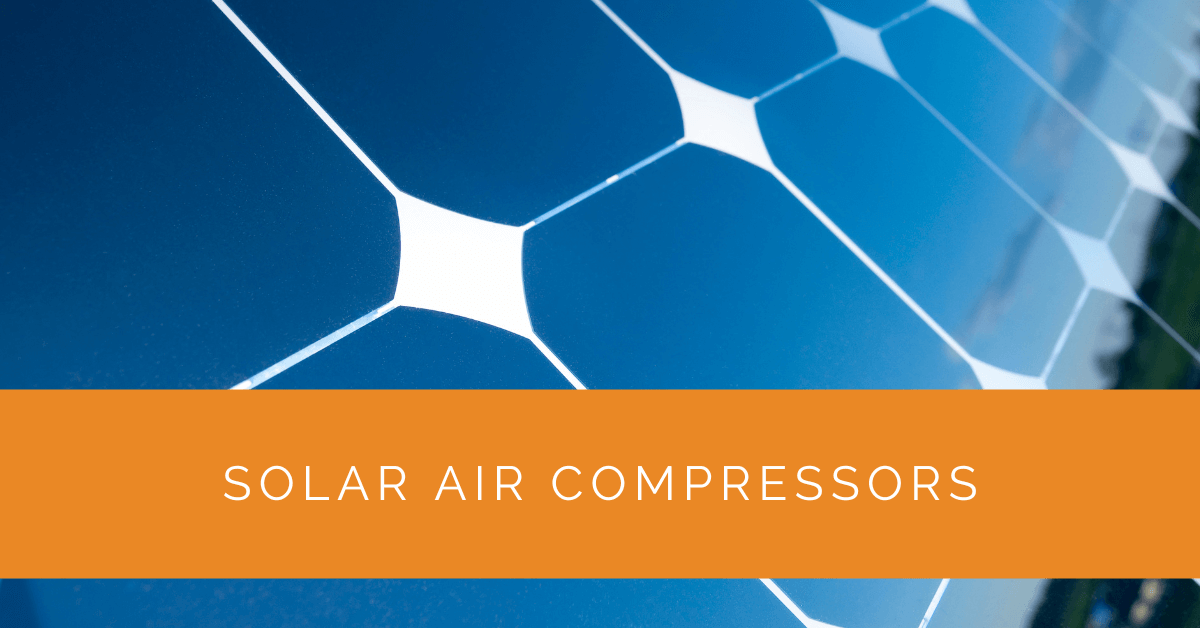Air compressors are essential in numerous industries, powering various tools and equipment. In recent years, the emergence of solar air compressors has revolutionized the field. These eco-friendly and energy-efficient alternatives harness the power of the sun to generate compressed air. This article will delve into the world of solar air compressors, exploring their benefits, types, and considerations.
Contents
- 1 Key Takeaways
- 2 Understanding Air Compressors
- 3 Introducing Solar Air Compressors
- 4 Types of Solar Air Compressors
- 5 Considerations for Choosing a Solar Air Compressor
- 6 Manual vs. Automatic Operation
- 7 Case Study: Implementing Solar Air Compressors for Sustainable Industrial Operations
- 8 Expert Insights From Our Solar Panel Installers About Solar Air Compressors
- 9 Experience Solar Excellence with Us!
- 10 Conclusion
Key Takeaways
- A solar air compressor is an eco-friendly, energy-efficient alternative that harnesses solar power to generate compressed air.
- Solar air compressors come in different types, including single and dual solar, offering flexibility and continuous operation options.
- These compressors provide numerous benefits, such as reduced carbon emissions, energy savings, and reliable power supply in remote locations.
Understanding Air Compressors
Air compressors are versatile devices used in various industries and applications. They play a vital role in providing compressed air for powering pneumatic tools, controlling industrial processes, and more. Air compressors use a power source, typically an electric or gas engine, to store air in a pressurized tank or receiver. The compressed air can then be released when needed to perform various tasks efficiently.
With their ability to generate and store compressed air, air compressors offer significant advantages in terms of convenience and productivity. They enable pneumatic tools, such as impact wrenches, nail guns, and spray guns, known for their power and precision. Moreover, air compressors facilitate the automation and efficiency of industrial processes and powering equipment like pneumatic cylinders, valves, and actuators.
Introducing Solar Air Compressors
Solar air compressors present an innovative and environmentally friendly solution to traditional air compression. By harnessing the sun’s power, these compressors leverage solar panels to convert sunlight into electricity, which then powers the compressor to generate compressed air. This renewable energy source eliminates the reliance on fossil fuels and reduces carbon dioxide emissions, making solar air compressors a sustainable alternative.
Solar air compressors offer several advantages beyond their environmental benefits. They provide a cost-effective solution by utilizing free and readily available solar energy. With no ongoing fuel costs and minimal maintenance requirements, solar air compressors can significantly reduce operational expenses for businesses. Their silent operation and lack of exhaust emissions also contribute to a healthier and safer working environment.
Types of Solar Air Compressors
Different types of solar air compressors are available to meet specific application requirements and operational needs.
- Single Solar Air Compressor: This type of solar air compressor relies solely on solar power. It consists of solar panels that capture sunlight and convert it into electricity to power the compressor. Single solar air compressors are ideal for locations with ample sunlight and consistent energy production.
- Dual Solar Air Compressor: Dual solar air compressors combine solar power with an additional power source, such as electricity or a backup generator. This configuration ensures uninterrupted operation even during limited sunlight or high air demand. Dual solar air compressors provide flexibility and reliability, making them suitable for critical continuous compressed air supply applications.

Considerations for Choosing a Solar Air Compressor
Several factors should be considered when selecting a solar air compressor to ensure optimal performance and efficiency.
- Air Demand: Assess the specific air demand requirements of your application. Consider factors such as the volume of compressed air needed, the frequency of use, and the fluctuation in air demand throughout the operation.
- Power Output and Capacity: Evaluate the power output and capacity of the solar air compressor to ensure it can meet the air demand efficiently. The power output should align with the application’s requirements, and the compressor’s capacity should be sufficient to handle the desired air volume.
- Efficiency and Performance: Look for solar air compressors with high-efficiency ratings and performance capabilities. Consider the compressor’s size, pressure rating, duty cycle, and overall design to ensure optimal energy utilization and reliable operation.
- Technology and Control: Evaluate the technology and control features incorporated into the solar air compressor. Advanced controllers can optimize energy consumption, monitor system performance, and enable integration with other components or systems for enhanced automation and monitoring.
Manual vs. Automatic Operation
Solar air compressors are available in manual and automatic operation modes, each offering distinct advantages depending on the application’s requirements.
- Manual Operation: Manual solar air compressors allow users to control the compressor’s operation manually. This type of compressor is typically simpler in design and operation, making it suitable for applications with lower air demand or where continuous operation is unnecessary. The manual operation gives users direct control over starting and stopping the compressor as needed, allowing for greater flexibility and energy conservation.
- 2. Automatic Operation: Automatic solar air compressors have advanced control systems and sensors that enable automated operation. These compressors can monitor air demand, adjust compressor speed or output, and optimize energy usage based on real-time conditions. Automatic operation is ideal for applications with varying air demand or continuous compressed air supply. It provides convenience and energy efficiency and ensures consistent performance without manual intervention.
When choosing between manual and automatic operation, consider the specific requirements of your application, the desired level of control, and the need for energy optimization. Factors such as air demand fluctuation, system complexity, and operational convenience should also be considered to select the most suitable mode of operation for your solar air compressor.
Case Study: Implementing Solar Air Compressors for Sustainable Industrial Operations
Background
At Solar Panels Network USA, we are committed to pioneering sustainable solutions for industrial applications. One of our recent projects involved introducing solar air compressors to a manufacturing plant aiming to reduce its environmental impact and operational costs.
Project Overview
The manufacturing plant, a leader in producing eco-friendly packaging, required a reliable and energy-efficient solution for its compressed air needs. Traditional air compressors were heavily reliant on electricity, contributing to high energy costs and a significant carbon footprint. The plant’s management sought a sustainable alternative to align with their environmental goals and operational efficiency.
Implementation
Initial Assessment and Design
We conducted a thorough assessment of the plant’s compressed air requirements, considering factors such as air demand, operational hours, and peak usage times. Based on this data, we designed a system incorporating dual solar air compressors, ensuring a continuous supply of compressed air regardless of sunlight availability.
Installation of Solar Panels and Compressors
Our team installed high-efficiency solar panels on the factory’s rooftop, strategically positioning them to maximize sunlight exposure. The dual solar air compressors were then integrated into the plant’s existing air system. These compressors were equipped with advanced controllers to optimize energy consumption and maintain consistent air pressure.
System Integration and Testing
Post-installation, we integrated the solar air compressors with the plant’s monitoring system, allowing real-time performance tracking and energy usage analytics. Rigorous testing was conducted to ensure seamless operation and reliability, addressing any potential issues before full-scale deployment.
Results
The implementation of solar air compressors yielded impressive results:
- Significant Energy Savings: The plant observed a substantial reduction in electricity usage, leading to lower operational costs. By harnessing solar energy, the compressors provided a cost-effective solution with no ongoing fuel expenses.
- Reduced Carbon Footprint: The switch to solar air compressors drastically cut the plant’s carbon emissions, aligning with its commitment to sustainability. The reduction in reliance on fossil fuels contributed to a cleaner and healthier environment.
- Reliable Performance: The dual compressor system ensured uninterrupted air supply, even during cloudy days or peak demand periods. The advanced controllers facilitated efficient energy management, optimizing the compressors’ performance.
Summary
This case study highlights the successful integration of solar air compressors into an industrial setting, demonstrating the potential for substantial energy savings and environmental benefits. By choosing dual solar air compressors, the manufacturing plant achieved reliable and continuous operation, significantly reducing its carbon footprint and operational costs.
Solar Panels Network USA’s expertise in designing and implementing solar solutions ensured the project’s success, providing the plant with a sustainable and efficient compressed air system. This project underscores the importance of adopting renewable energy technologies to achieve both environmental and economic goals.
Expert Insights From Our Solar Panel Installers About Solar Air Compressors
Solar air compressors are a game-changer for industries aiming to reduce their carbon footprint. By leveraging solar energy, these systems provide a sustainable alternative to traditional compressors, offering both environmental benefits and operational savings.
Chief Solar Engineer
Choosing the right type of solar air compressor, whether single or dual, depends on your specific needs. Dual systems offer the reliability of continuous operation, even during periods of low sunlight, making them ideal for critical applications.
Lead Solar Technician
Maintenance for solar air compressors is relatively low, especially compared to traditional systems. Ensuring your solar panels are clean and operating efficiently can maximize the compressor’s performance and longevity.
Solar Systems Specialist
Experience Solar Excellence with Us!
Trust in Solar Panels Network USA, where our seasoned experts deliver top-quality solar solutions for homes and businesses nationwide. With a legacy of countless successful installations and a commitment to sustainable energy, we’re your reliable partner in the solar journey. Ready for a brighter, eco-friendly future? Call us now at (855) 427-0058 and harness the power of the sun!
Conclusion
Solar air compressors offer a sustainable and efficient alternative for generating compressed air. By harnessing the sun’s power, these compressors provide a greener solution while reducing reliance on traditional energy sources. With their ability to operate solely on solar power or in conjunction with alternative power sources, solar air compressors offer flexibility and reliability in various applications.
By adopting solar air compressors, industries can significantly reduce their carbon footprint and contribute to a cleaner environment. Solar power minimizes reliance on fossil fuels, lowering greenhouse gas emissions. Solar air compressors can also lead to substantial energy savings as they tap into the sun’s virtually limitless energy.
About the Author
Solar Panels Network USA stands at the forefront of solar energy solutions, driven by a team of seasoned solar engineers and energy consultants. With over decades of experience in delivering high-quality solar installations and maintenance, we are committed to promoting sustainable energy through customer-centric, tailored solutions. Our articles reflect this commitment, crafted collaboratively by experts to provide accurate, up-to-date insights into solar technology, ensuring our readers are well-informed and empowered in their solar energy decisions.

